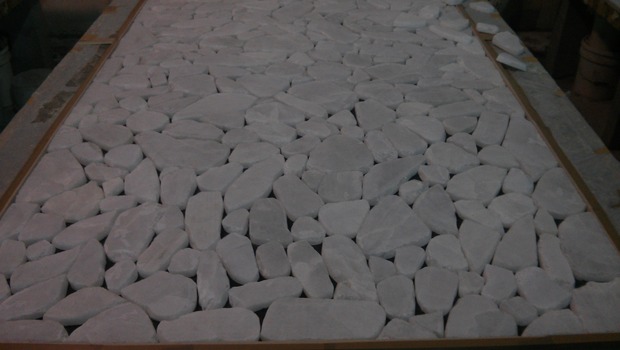Misconception 1: All semi-precious stone slabs are the same
This could not be further from the truth. The reasons for this are simple:
a) The slabs are not cut from blocks in the same way as say onyx, marble or granite
b) Semi-precious stone slabs are made up of hundreds of individual sections/pieces that are assembled almost like a giant jigsaw puzzle and are set in resin.
While slabs may indeed look similar, this process basically makes it impossible for any two slabs to look exactly the same.
Misconception 2: All semi-precious stone is the same
The quality of the raw materials in terms of colour and clarity is vital because poor quality stones and lack of quality control will result in poor end results. Lesser quality raw materials and a low ratio of stone to resin (we have seen some examples that contain less than 55{581ee0b10ac485aab42a024de28e4cf010529bf27b29446ec6ec0e6b677d4b83} stone content) this will result in cheap pricing. It is also not uncommon for suppliers to offer dyed materials in an attempt to replicate the more expensive stones and/or to offer veneered stones laminated to glass/Perspex.
Misconception 3: All stones used in semi-precious stone slabs are the same
This is also not true. Sourced from high quality quarries around the world, semi-precious stones fall into different categories, including quartz and agates.
Quartz – Quartz is a hard, silica-based mineral found around the world in metamorphic and igneous rocks. Typically occurring as white or colourless hexagonal prisms, quartz is often coloured delicately by impurities. Some of most popular Quartz materials used within interior design are: Amethyst, Smokey Quartz and White Quartz.
Agate – Found in a variety of bright, translucent colours, including white, grey and black; blue, purple and green; red, orange and brown, as well as yellow, agate is a form of microcrystalline, finely grained form of quartz. Some of the most popular Agates used within interior design are: Natural Agate, Grey Agate and black Agate





